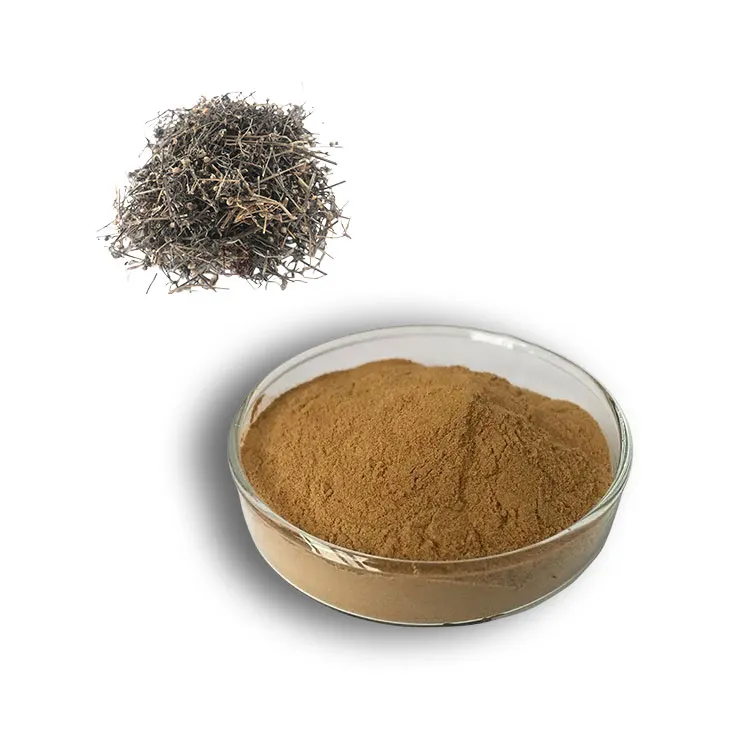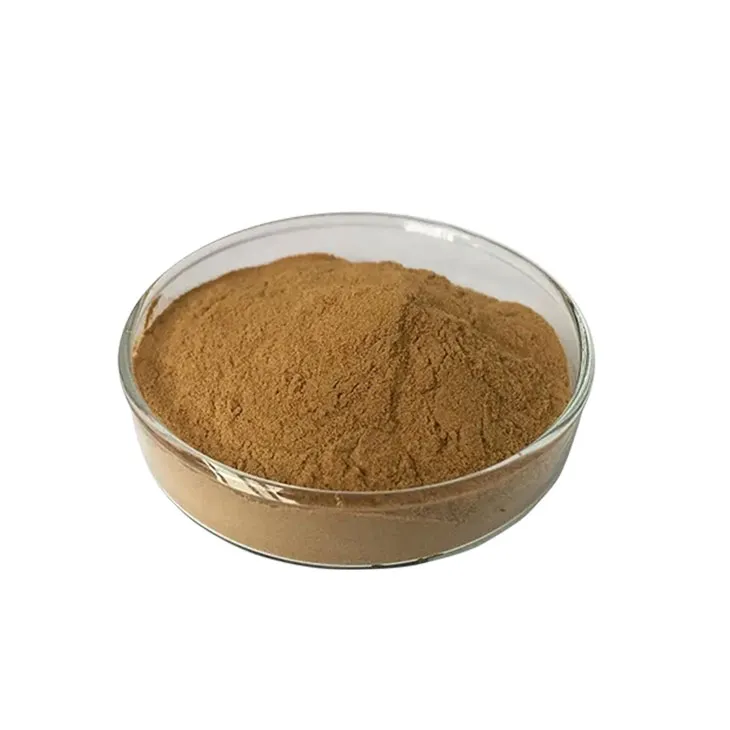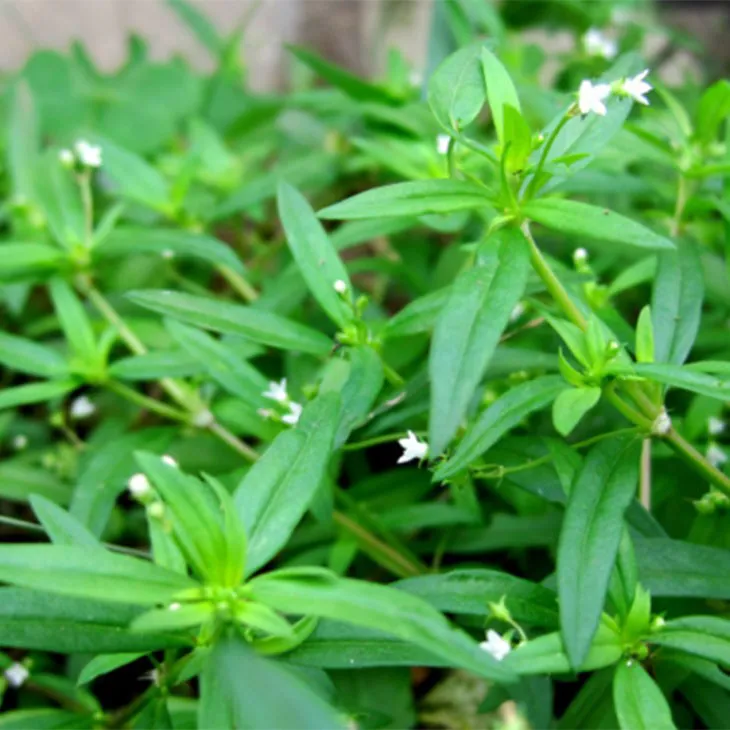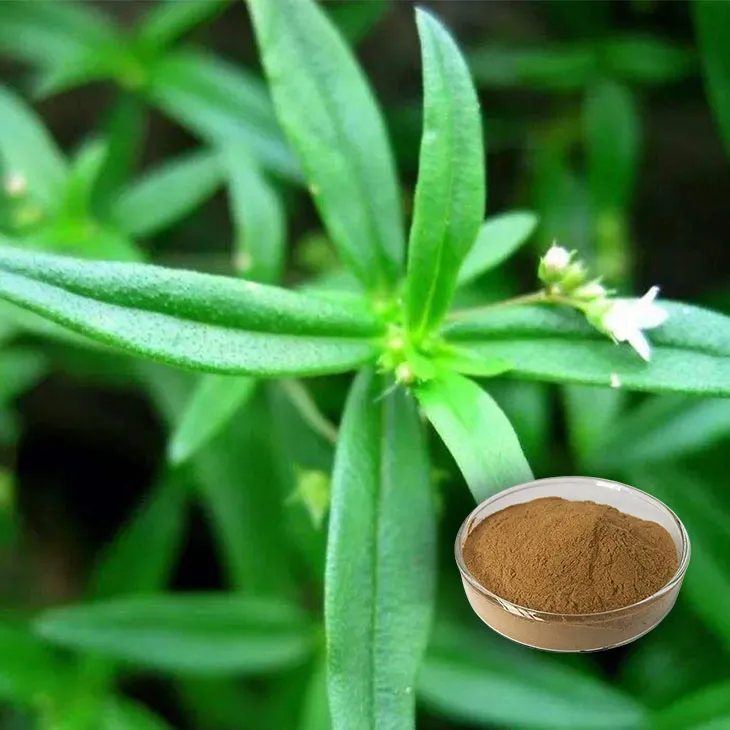- 0086-571-85302990
- sales@greenskybio.com
The process of extracting Hedyotis diffusa flavonoids from Hedyotis diffusa extract.
2024-11-26

1. Introduction
Hedyotis diffusa is a well - known traditional Chinese medicinal herb, which has been widely used in traditional Chinese medicine for a long time. Hedyotis diffusa flavones, as important bioactive components in Hedyotis diffusa, possess various pharmacological activities, such as antioxidant, anti - inflammatory, and anti - tumor properties. These flavones have attracted increasing attention in the fields of medicine, food, and cosmetics. Therefore, the extraction of hedyotis diffusa flavones from Hedyotis Diffusa Extract has become an important research topic.

2. Significance of Hedyotis Diffusa and Its Flavones
2.1 In the Field of Medicine
Hedyotis diffusa has been used in traditional Chinese medicine to treat various diseases. The flavones in Hedyotis diffusa play a crucial role in these therapeutic effects. For example, they can scavenge free radicals in the body, reducing oxidative stress - related diseases. Moreover, studies have shown that hedyotis diffusa flavones may have inhibitory effects on some cancer cells, which provides potential for the development of new anti - cancer drugs.2.2 In the Field of Food
As natural antioxidants, hedyotis diffusa flavones can be added to food to extend the shelf life of food products. They can also improve the nutritional value of food. For instance, in some functional foods, the addition of hedyotis diffusa flavones can enhance the health - promoting effects of the food.2.3 In the Field of Cosmetics
The antioxidant and anti - inflammatory properties of hedyotis diffusa flavones make them ideal ingredients in cosmetics. They can protect the skin from environmental damage, such as ultraviolet radiation and pollution. Also, they may help in reducing skin inflammation and improving skin texture.
3. Extraction Methods
3.1 Solvent Extraction
- Principle: Solvent extraction is based on the solubility difference of hedyotis diffusa flavones in different solvents. The flavones are dissolved in an appropriate solvent, and then separated from the other components in the extract.
- Advantages: It is a relatively simple and traditional method. Commonly used solvents such as ethanol are relatively inexpensive and easy to obtain. It can be carried out in a normal laboratory environment.
- Limitations: The extraction efficiency may not be very high. It often requires a relatively long extraction time and a large amount of solvent. And some solvents may be harmful to the environment.
3.2 Ultrasonic - Assisted Extraction
- Principle: Ultrasonic waves can cause cavitation effects in the solvent. The cavitation bubbles generated by ultrasonic waves collapse instantaneously, creating local high - temperature and high - pressure environments. This can enhance the mass transfer between the solvent and the flavones in Hedyotis Diffusa Extract, promoting the dissolution of flavones into the solvent.
- Advantages: It can significantly shorten the extraction time compared with solvent extraction. It also has relatively high extraction efficiency.
- Limitations: The equipment for ultrasonic - assisted extraction is relatively expensive. And improper ultrasonic parameters may lead to the degradation of flavones.
3.3 Supercritical Fluid Extraction
- Principle: Supercritical fluid extraction uses supercritical fluids, such as supercritical CO₂. Supercritical fluids have properties between gases and liquids. They can penetrate into the matrix of Hedyotis Diffusa Extract easily and dissolve the flavones. When the pressure and temperature change, the solubility of the flavones in the supercritical fluid changes, allowing for separation.
- Advantages: It is a green extraction method because supercritical CO₂ is non - toxic, non - flammable, and has a low environmental impact. It can achieve high - purity extraction and has relatively high extraction efficiency.
- Limitations: The equipment for supercritical fluid extraction is very expensive and requires high - pressure operation conditions, which has relatively high technical requirements.

4. Factors Influencing Extraction Efficiency
4.1 Extraction Time
Generally, with the increase of extraction time, the amount of hedyotis diffusa flavones extracted will increase. However, when the extraction time reaches a certain value, the increase in extraction amount will become very slow or even stop. For example, in solvent extraction, if the extraction time is too long, it may also cause the degradation of flavones.4.2 Extraction Temperature
Temperature also has a significant impact on the extraction efficiency. Different extraction methods have different optimal temperature ranges. For ultrasonic - assisted extraction, an appropriate increase in temperature can enhance the cavitation effect and promote the extraction of flavones. But if the temperature is too high, it may lead to the inactivation of flavones. In supercritical fluid extraction, the temperature directly affects the properties of the supercritical fluid and thus the extraction efficiency.4.3 Solvent Type
The choice of solvent is crucial for solvent extraction. Different solvents have different solubility for hedyotis diffusa flavones. Ethanol is a commonly used solvent due to its relatively good solubility for flavones and its safety. However, other solvents such as methanol and ethyl acetate may also be used depending on specific requirements. The polarity of the solvent also affects the extraction efficiency.
5. Purification and Identification Techniques of Extracted Flavones
5.1 Purification Techniques
- Column Chromatography: Column chromatography is a common method for purifying hedyotis diffusa flavones. It uses a stationary phase (such as silica gel) and a mobile phase (a solvent system) to separate flavones according to their different affinities for the stationary and mobile phases.
- High - Performance Liquid Chromatography (HPLC): HPLC can be used not only for purification but also for separation and quantification of flavones. It has high separation efficiency and can accurately separate different flavone components in the extract.
5.2 Identification Techniques
- Spectroscopic Methods: Ultraviolet - visible spectroscopy (UV - Vis) can be used to identify flavones based on their characteristic absorption spectra in the ultraviolet and visible regions. Infrared spectroscopy (IR) can provide information about the functional groups in flavones. Nuclear magnetic resonance spectroscopy (NMR) is a powerful tool for determining the structure of flavones, which can provide detailed information about the chemical bonds and the spatial structure of flavone molecules.
- Mass Spectrometry (MS): MS can determine the molecular weight of flavones and their fragmentation patterns, which is very useful for identifying the chemical structure of flavones.
6. Conclusion
The extraction of hedyotis diffusa flavones from hedyotis diffusa extract is a complex process that involves multiple factors. Different extraction methods have their own characteristics, advantages, and limitations. The factors such as extraction time, temperature, and solvent type also play important roles in the extraction efficiency. Moreover, the purification and identification of the extracted flavones are also necessary steps to ensure the quality and application of flavones. With the continuous development of technology, more efficient and environmentally friendly extraction methods are expected to be developed in the future, which will further promote the research and application of hedyotis diffusa flavones in various fields.
FAQ:
What are the main extraction methods for Hedyotis diffusa flavones from Hedyotis diffusa extract?
There are mainly three extraction methods for Hedyotis diffusa flavones from Hedyotis diffusa extract. Solvent extraction uses solvents to dissolve the flavones. Ultrasonic - assisted extraction utilizes ultrasonic waves to enhance the extraction efficiency. Supercritical fluid extraction uses supercritical fluids. Each method has its own principle, advantages and limitations.
What factors can influence the extraction efficiency of Hedyotis diffusa flavones?
Several factors can influence the extraction efficiency. Extraction time is an important factor. Longer extraction time may increase the yield, but there may be a saturation point. Temperature also plays a role. Appropriate temperature can promote the extraction, but too high temperature may cause the degradation of flavones. The type of solvent is crucial as different solvents have different solubility for flavones.
How are the extracted Hedyotis diffusa flavones purified?
There are several purification techniques for the extracted Hedyotis diffusa flavones. Commonly used methods include column chromatography, which can separate flavones based on their different affinities with the stationary phase. Recrystallization can also be used to purify flavones by dissolving and re - crystallizing the flavones to obtain purer products.
What are the significance of Hedyotis diffusa and its flavones in different fields?
Hedyotis diffusa has various significance in different fields. In traditional medicine, it has been used for certain medicinal purposes. Its flavones may have antioxidant, anti - inflammatory and other biological activities, which show potential in the fields of medicine and health care. In addition, it may also have applications in the field of cosmetics due to its beneficial properties.
What are the advantages and limitations of solvent extraction for Hedyotis diffusa flavones?
The advantage of solvent extraction is that it is a relatively simple and traditional method. It can use a variety of solvents according to the solubility of flavones. However, the limitation is that it may require a large amount of solvents, and some solvents may be harmful to the environment. Also, the extraction efficiency may not be as high as some modern extraction methods.
Related literature
- Title: Study on the Extraction and Activity of Flavonoids in Hedyotis diffusa"
- Title: "Optimization of the Extraction Process of Hedyotis diffusa Flavones"
- Title: "Analysis of Hedyotis diffusa Flavones: Extraction, Purification and Identification"
- ▶ Hesperidin
- ▶ citrus bioflavonoids
- ▶ plant extract
- ▶ lycopene
- ▶ Diosmin
- ▶ Grape seed extract
- ▶ Sea buckthorn Juice Powder
- ▶ Beetroot powder
- ▶ Hops Extract
- ▶ Artichoke Extract
- ▶ Reishi mushroom extract
- ▶ Astaxanthin
- ▶ Green Tea Extract
- ▶ Curcumin Extract
- ▶ Horse Chestnut Extract
- ▶ Other Problems
- ▶ Boswellia Serrata Extract
- ▶ Resveratrol Extract
- ▶ Marigold Extract
- ▶ Grape Leaf Extract
- ▶ blog3
- ▶ blog4
-
100% Pure Natural Bilberry Extract.
2024-11-26
-
The Best Cranberry Extract in 2024.
2024-11-26
-
The best natural source of diosmin.
2024-11-26
-
100% Pure Organic Hedyotis Diffusa Extract.
2024-11-26
-
How to make powder with baicalin?
2024-11-26
-
Uridine-5'-monophosphate Disodium salt
2024-11-26
-
Polygonum Cuspidatum Extract
2024-11-26
-
Astaxanthin
2024-11-26
-
Sea buckthorn Juice Powder
2024-11-26
-
Nutmeg Extract
2024-11-26
-
Yam Extract
2024-11-26
-
Kupilu Extract
2024-11-26
-
Dandelion Root Extract
2024-11-26
-
Hedyotis Diffusa Extract
2024-11-26
-
Andrographis Paniculata Extract Powder
2024-11-26




















